
Here is an article, published in AARP magazine, about the toll caregiving takes on the employed and about how employers are faced with having to provide support.
New York gerontologist Ellen Eichelbaum was giving a speech on elder care issues in Dallas when she was interrupted by news of her own elder care crisis.
Eichelbaum's 89-year-old mother urgently needed medical attention following oral surgery. At the same time, Eichelbaum received word that her pregnant daughter was in labor.
"I ran out to where my mother lives in New Jersey while my daughter was giving birth in Pennsylvania. The stress was so unbelievable that I could feel my blood boiling," says Eichelbaum, 58, who counsels companies about how to help their employees care for ailing parents. "My own life has become hell because I'm constantly making choices. Who should I take care of first—my grandchildren, my mother or my husband?"
As people live longer, more boomers like Eichelbaum are finding themselves caring for their parents while trying to balance the demands of a job and the needs of their children. Doing double, sometimes triple duty takes a toll not only on their emotions but also on their finances and their productivity at work. Increasingly, employees—and employers—are looking for ways to cope.
More than 44 million Americans are involved in caring for an aging relative or friend, and about 29 million of them are employed, according to the nonprofit National Alliance for Caregiving (NAC) in Bethesda, Md., and AARP. Among boomers, 35 percent say they are, or have been, responsible for their parents' care.
And with the 85-plus population growing at the fastest rate, the U.S. Department of Labor predicts that by 2008, 54 percent of the work force will be involved in caring for an older person—including making doctors' appointments, calling around to find out about care facilities or handling emergency situations.
Not everyone is able to manage the often conflicting demands of working and caregiving. The "MetLife Juggling Act Study," reported by the MetLife Mature Market Institute in 1999, found that 16 percent of employees quit their jobs and 13 percent retired early because they could not manage full-time work along with the demands of caring for children, spouses and parents.
The study found that of 950 working caregivers, the average loss per person was an estimated $566,500 in wages, $67,000 in pension benefits and $25,500 in Social Security benefits—a lifetime loss of $659,000. The reasons cited were reduced work hours and missed promotions, transfers or training opportunities.
While taking a toll on workers, elder care problems also hurt business. The MetLife report estimated that U.S. companies lose $11 billion to $29 billion a year in reduced productivity. Gerontologist Sandra Timmermann says a new report due out soon will reveal the loss is much greater.
"This next decade is bound to be the elder care decade," says Timmermann. "People are working, they live far away from their parents, there are fewer siblings, and they don't have support systems in place."
Despite the growing number of workers with caregiving responsibilities, only about one in four U.S. businesses offers employees elder care support services and benefits such as flexible hours and telecommuting, according to the Society for Human Resources Management in Alexandria, Va.
And that hasn't changed in a decade, says Donna Wagner, director of gerontology at Towson University in Maryland. "Only the big companies offer this, and the majority of the American work force doesn't work for big companies, so you're touching very few lives when it comes to this issue."
Deborah Russell, AARP's director of work-force issues, believes that a shift in corporate policy and culture must occur for workers to successfully balance the demands of work and family. "As boomers age, this issue will become even more important," Russell says. "Employers will have to have resources in place, like flextime and programs to help caregivers at a distance, or else productivity will go down."
Slowly, companies are responding. Some offer support groups for employee caregivers during lunch hours. Others contract with elder care services to offer programs such as one-on-one counseling, referrals to dependent-care services and at-home assessments to determine what services an older adult needs to live independently.
Mortgage giant Fannie Mae invests $100,000 annually to provide elder care benefits for its employees in Washington—about 1,200 workers have taken advantage of the program. A survey in 2002 showed that 28 percent said they would have been forced to quit without such help, says Senior Program Manager Michelle Stone.
According to Stone, a full-time, on-site gerontologist advises employees on elder care resources and services. She can assist with counseling, long-distance caregiving, financial issues, housing options—even phone calls. "With this kind of help," says Stone, "employees are then able to focus on their role at work rather than spend time doing the research themselves."
Despite the recent attention, a stigma in the work place remains attached to elder care, according to NAC president Gail Hunt. "People are afraid that when their companies are downsizing, they'll be remembered for taking time off to care for their mother," Hunt says.
Gerontologist Eichelbaum believes that companies that do adopt compassionate policies are bound to get more satisfied, loyal and productive workers in return. "It would be nice to work in an environment where people understand your challenges, where your boss understands," she says. "When companies are compassionate, everybody works harder."
By Carole Fleck 2006-05-19 13:32:00-04:00 - AARP Bulletin Today
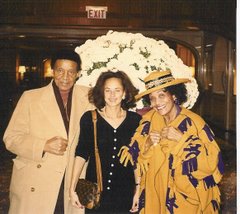

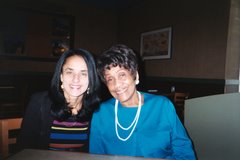

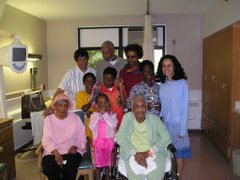

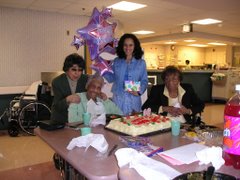

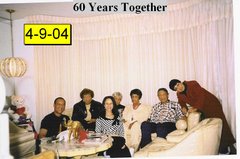


.jpg)
No comments:
Post a Comment